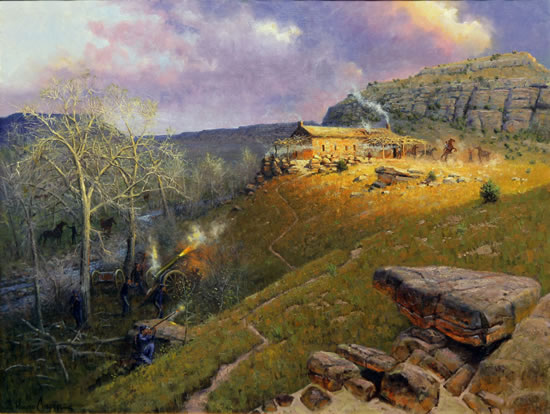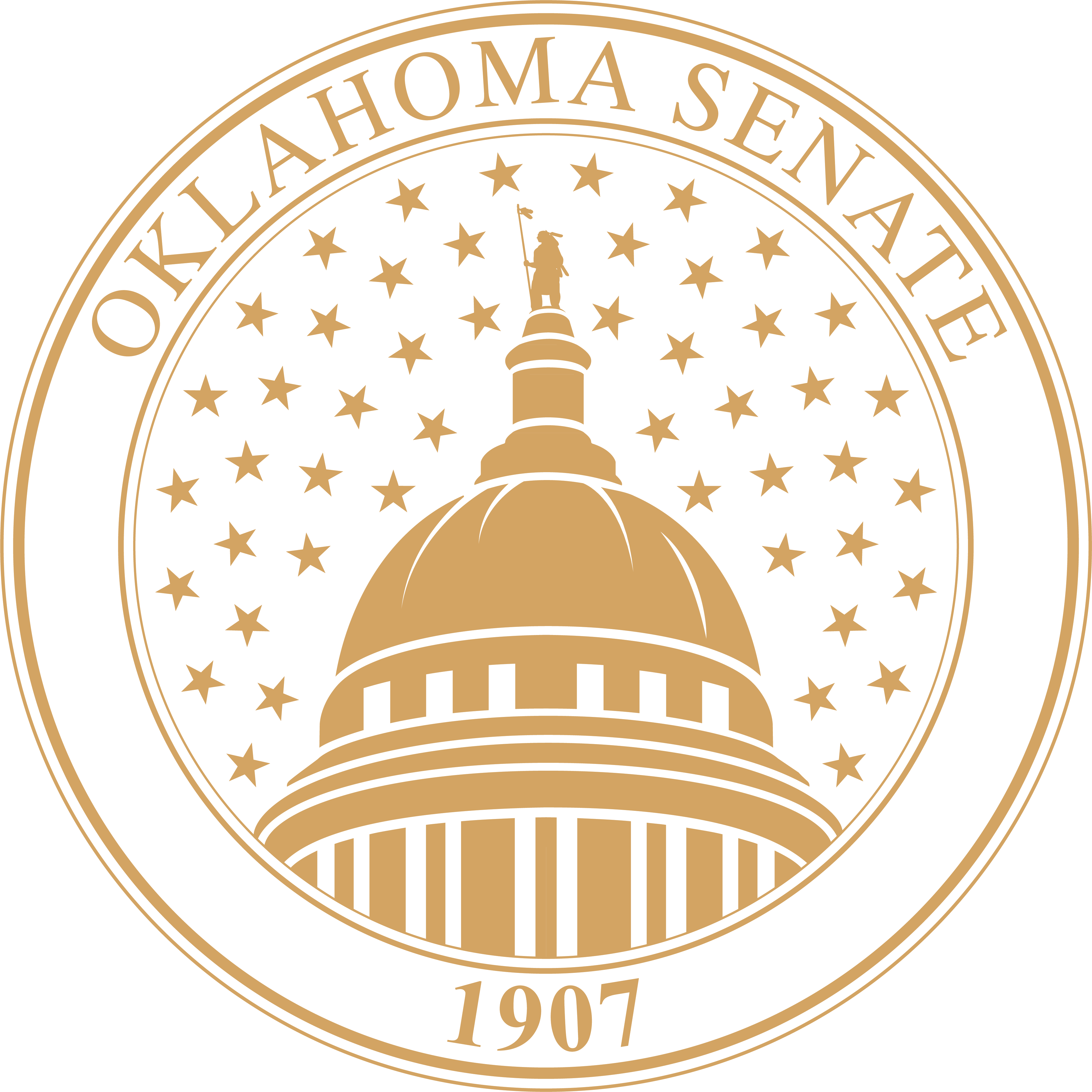Robber's Roost

Artist: Wayne Cooper
Sponsor: Senator Owen & Charlette Laughlin
Dedication: May 2, 2007
Size: 30" x 40"
Type: Oil on Canvas
Location: 5th Floor, South hall, Senate wing
A rock fortress known as Robber’s Roost was built by a band of outlaws led by Captain William Coe in No Man’s Land in the late 1860’s. Coe’s followers were estimated to be from 30-50 in size, but seldom were all of them at the stronghold at any one time.
The Roost was a 16x36 foot house with stone walls 30 inches thick. It had one door and no windows. Instead, there were 27 tall and narrow portholes, 4 inches open to the outside and 18-20 inches on the inside. This made for a small target on the outside and plenty of room to maneuver a rifle on the inside.
The region near Black Mesa had been a sanctuary for outlaws and renegades. In 1850, Congress established the boundaries for Texas, Kansas and New Mexico. When they finished, they were shocked to discover a parcel of land unclaimed by any territory. Congress declared it “neutral” or “No Man’s Land” and promptly forgot about it. The result was a strip of land 167 miles long and nearly 35 miles wide without any kind of government or law.
The army finally grew tired of Coe’s gang and brought in a cannon to fire on the fortress. The hideout took a direct hit and eleven of Coe’s men were captured and hung in the cottonwood trees on the nearby north Carrizo. Coe escaped and traveled along the Cimarron River to Madison, New Mexico. Mrs. Emory, wife of Madison Emory, fed Coe and gave him a place to sleep in the bunkhouse. While Coe slept, her 14 year-old son rode to catch up with the army and his stepfather. They returned, arrested Coe and brought him to Pueblo, Colorado. Coe was hung that night still handcuffed and shackled.
Today, only the foundation of Robber’s Roost is still standing.
Images are copyright of The Oklahoma State Senate Historical Preservation Fund, Inc. and the artist. Please contact Matt Duehning at 405-524-0126 or Matt.Duehning@oksenate.gov for further copyright information.
 Oklahoma Senate
Oklahoma Senate

